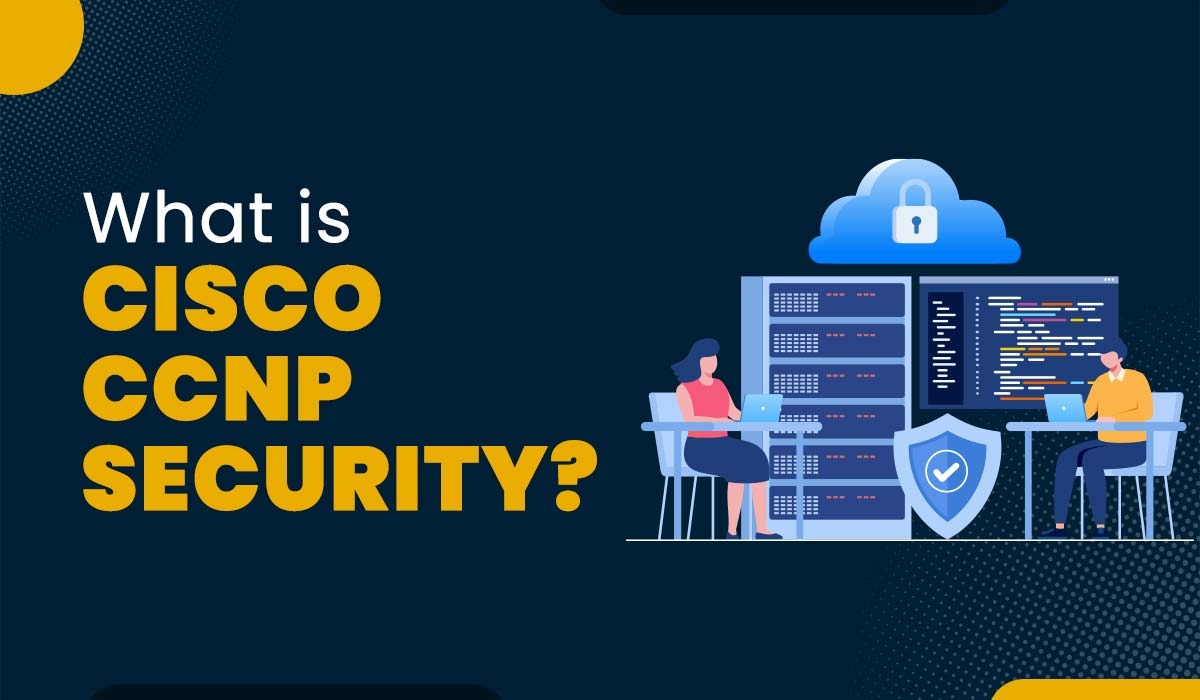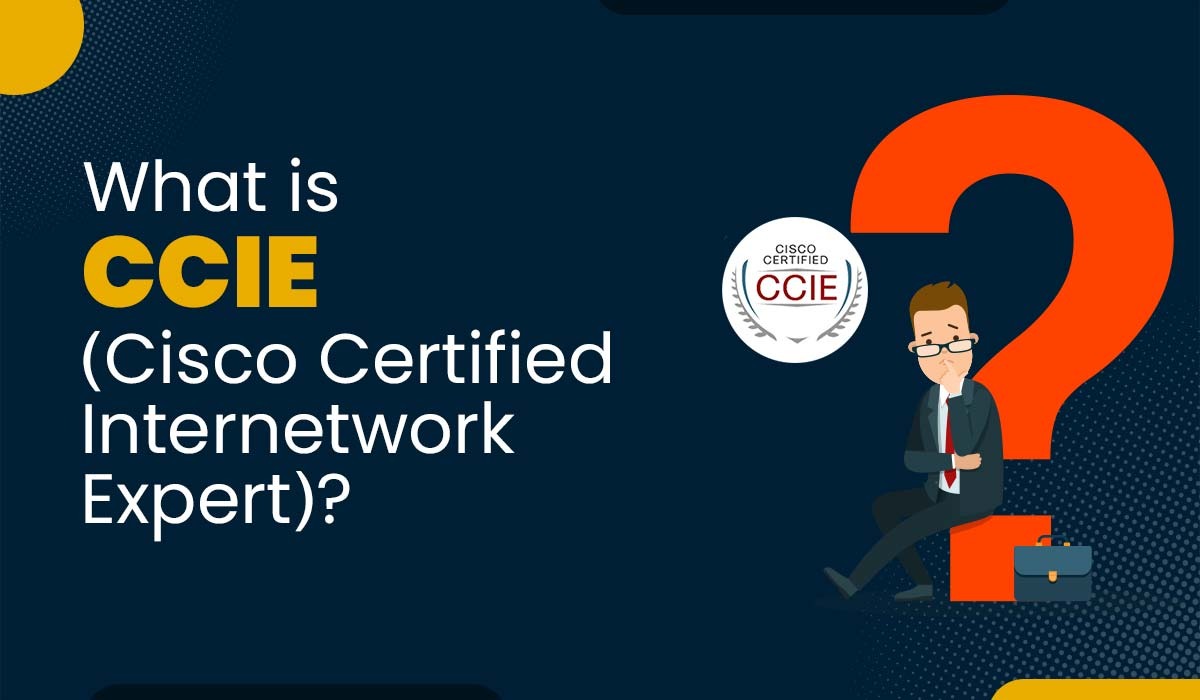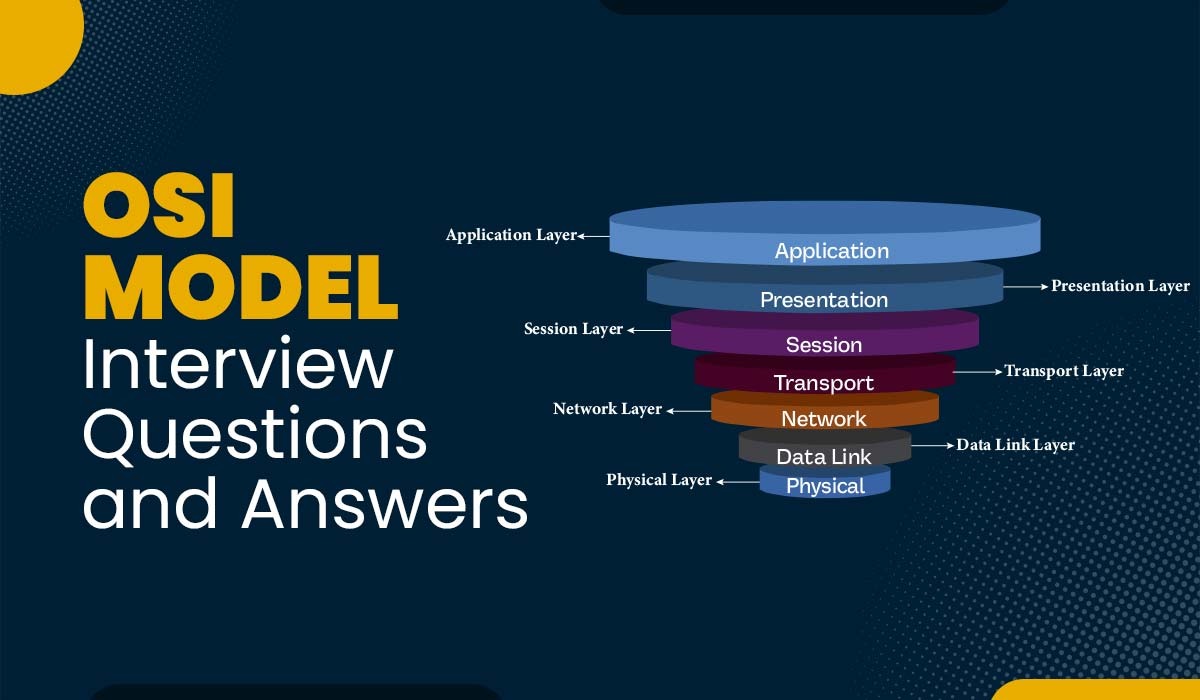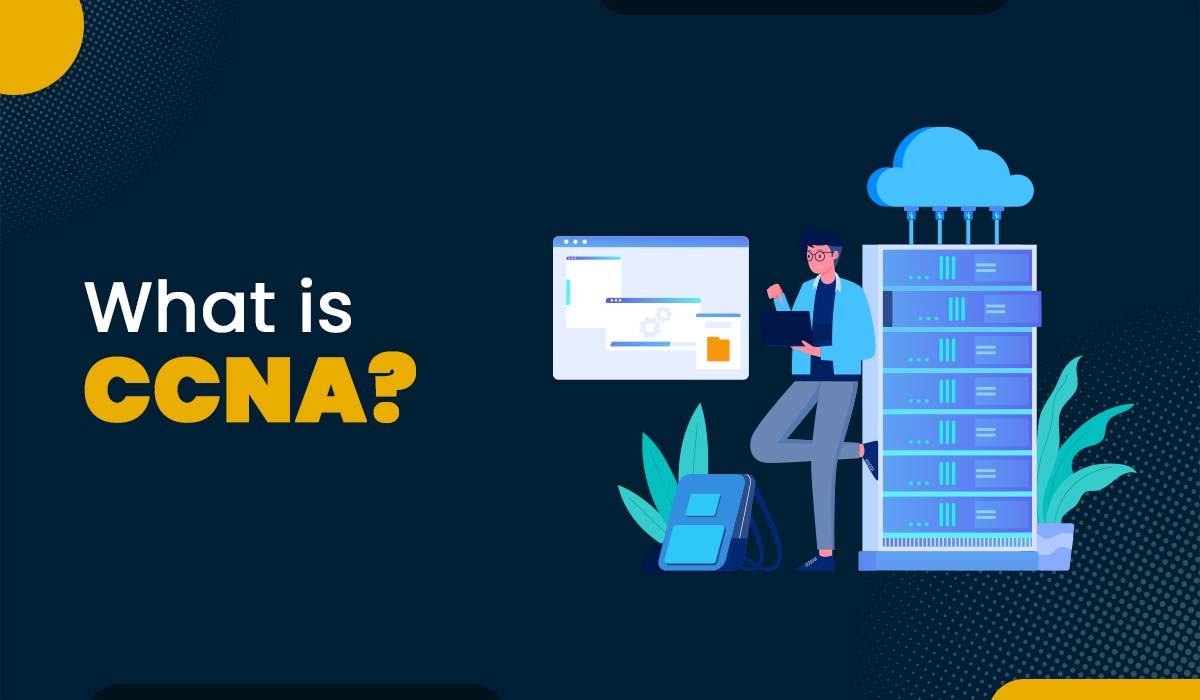BGP Interview Questions and Answers
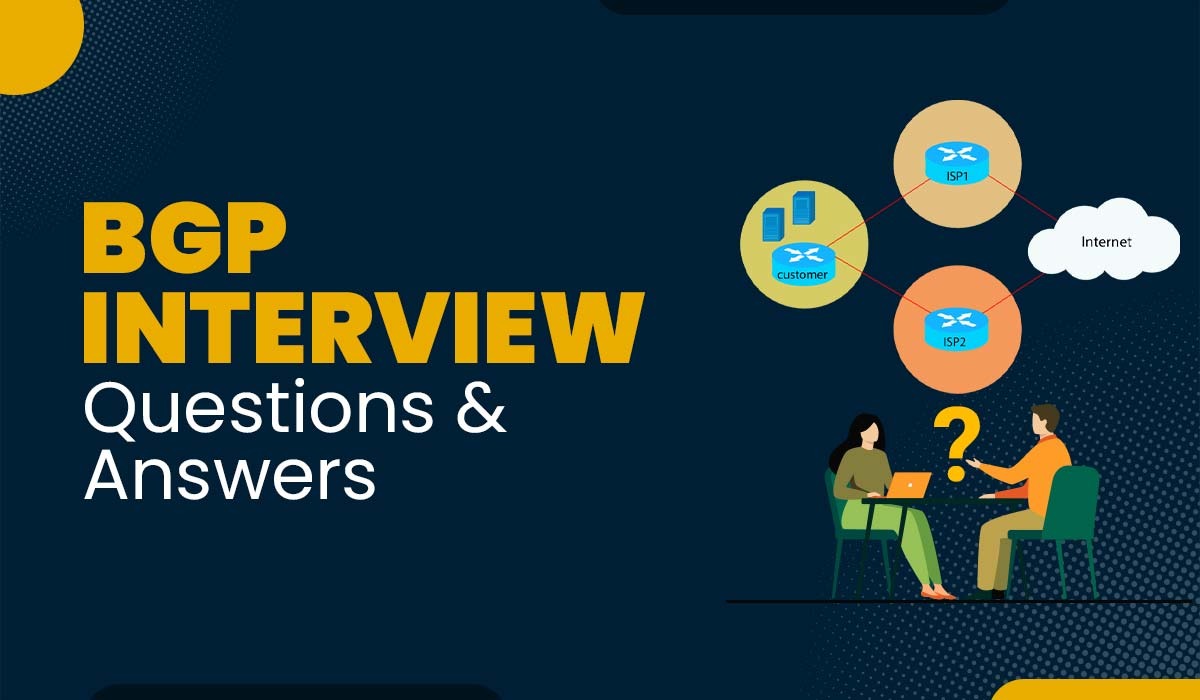
BGP stands for Border Gateway Protocol. It is a common EGP (exterior gateway protocol) that is designed to transfer information on reachability and routing between autonomous systems (AS) via the Internet. This protocol is one of the favourite topics of interviewers. Hence, we came up with the top BGP interview questions and answers to help everyone with their interviews. If you are looking to move ahead in your career, you can also check out – OSPF BGP Training. The Border Gateway Protocol (BGP) is the routing protocol for exchanging routing information throughout the Internet. It enables Internet Service Providers (ISP) to establish interconnections with one another, thereby allowing end-users to access multiple ISPs. BGP is the only protocol designed to handle a network of the Internet’s size and to manage multiple connections to separate routing domains effectively. BGP is used in data center networks, corporate networks, and service provider networks to communicate routing data between different locations or regions by choosing the best optimal path, which further depends on various factors such as distance, bandwidth, reliability, and policies. Here are the top BGP Interview questions and answers. If you are looking for BGP Interview questions and answers PDF, then you can skip directly to the end of this blog. Here are the top BGP Interview Questions and Answers for freshers. BGP can be described as a path-vector routing method that makes routing decisions based upon paths and network policies or rules set by the network administrator. Interior Border Gateway Protocol otherwise known as Internal BGP or iBGP is when BGP is used for routing within an autonomous system. Whereas, External BGP or eBGP is the internet application of the BGP. Learn the difference between eBGP and iBGP here. Some of the best features of BGP are as follows: The major difference between eBGP and iBGP neighbors is: It is not an essential condition for BGP that neighbors need to be attached to the same subnet. In fact, a TCP connection between the routers is applied by BGP to pass the BGP message. This allows routers to be anywhere. So, yes routers on different subnets can become BGP neighbors. Two mechanisms are used by BGP to prevent loops: 1. When an iBGP peer provides a route to a router, the same route is not shared with any another iBGP peer by that router. 2. Using AS_PATH – A BGP router adds its own ASN to the AS_PATH when it advertises to an eBGP peer. A route gets ignored if BGP router receives an update where router advertisement lists it an AS_PATH with its own ASN. Note: ASN is not added by the BGP router when it is advertising to an iBGP peer. Here is a comparison to show the difference between hard reset and soft reset in BGP – Hard Reset – The local router, in case of hard reset will bring down: In hard reset, it also removes the entire learning from the neighbor and the command used for hard reset is #clear ip bgp. Soft Reset – In a soft reset event, the router will not drop the BGP neighborship or the TCP connection. In this reset, the local router will resend all the outgoing updates and processes the incoming updates again. It will also readjust the BGP table on the current configuration. The command used for soft reset is #clear ip bgp * soft. Different BGP message types are as follows: Here are the various states of BGP: Various attributes are used by BGP to determine the best path to a destination. By default, the MED value is 0 and a smaller/lower value is preferred. The BGP local preference attribute is the second attribute. It is used in an AS to select the exit route from a local perspective. By default, its value is set to 100 and the path having highest local preference becomes more desired. This attribute is not shared between routers. These are the top 10 BGP interview Questions and answers for freshers. Let’s move on to BGP interview Questions for experienced candidates. Here are a few important BGP Interview Questions for experienced network engineers – Several factors, such as the BGP features, router, route dampening, the number of paths established, the number of available alternative paths, and VPN settings, affect the amount of Memory required to store BGP routes. Without this information, we can’t accurately estimate how much RAM is required to store a certain number of BGP routes. Cisco recommends that your router must have at least 512 MB of RAM to store a BGP routing table from a single BGP peer. However, knowing how to preserve memory and achieve efficient routing without acquiring the complete Internet routing table is crucial. Administrative Distance (AD) is a metric that may be used to determine the reliability of the routing information collected from an adjacent router. Routers give each source an AD value that falls anywhere from 0 to 255. A lower number is more reliable within this range than a larger one. After determining the path with the smallest value of AD, the next step will be to add that path to the routing table to arrive at the most efficient path for connecting to the distant target network. Below is the chart that best describes the default AD values by Cisco: Following are the basic differences between BGP and RIP: Here are a few differences between EIGRP and BGP: With MED, you can manage how other autonomous systems connect to yours so that they may access a specific prefix. BGP MED is only propagated to neighboring autonomous systems as a network property. The more probable the route is to be taken, the lower the MED. These are the advanced BGP Interview Questions and Answers for experienced network engineers. For more questions, you can download the PDF. If you are looking for a PDF with more BGP interview questions and answers, or a complete list of CCNA Interview questions and answers then visit this blog – CCNA Interview questions and answers In this blog post, we have discussed the commonly asked BGP interview questions and answers. We hope that this post will help you to prepare for your upcoming BGP interview and also helps in understanding some of the concepts and scenarios of BGP. BGP is an important part of our CCNA course if you focus on learning CCNA. You can go to our official CCNA course page by clicking here. We hope you like this blog; subscribe to our free newsletter for more interview questions. You may also like – SD-WAN Interview Questions and Answers We would love to hear from you, so do comment your feedback/suggestions.Introduction
About BGP (Border Gateway Protocol)
Basic BGP Interview Questions and Answers
Q1 – What is BGP Protocol?
Q2 – What are the features of BGP?
Q3 – What is the difference between eBGP & iBGP neighbors?
Q4 – Can Router on different subnet become BGP Neighbors?
Q5 – What is the Loop prevention mechanism in BGP?
Q6 – What is the difference between the hard reset and soft rest in BGP?
Q7 – What are different BGP Message Types?
Q8 – What are the different states of BGP?
Q9 – Explain BGP Path Attributes?
Q10 – What is BGP Local preference?
Advanced BGP Interview Questions and Answers
Q11 – How much Memory should my router have to get my ISP’s whole BGP routing table?
Q12 – What is the BGP AD value?
Route Sources Default AD Connected Interface 0 Static Route 1 External BGP 20 EIGRP 90 OSPF 110 RIP 120 External EIGRP 170 Internal BGP 200 Unknown 255 (Not used route) Q13 – What is the difference between BGP and RIP?
Border Gateway Protocol (BGP) Routing Information Protocol (RIP) BGP is based on the best-path algorithm. RIP is based on the Bellman-Ford algorithm. BGP is designed for large networks that span multiple ASes, and it can handle thousands of routes. RIP is suitable for smaller networks that have less than 15 hops. BGP is a hybrid protocol that combines features of distance vector and link state protocols. It uses attributes to describe the properties of each route and applies policies to manipulate them. RIP is a pure distance vector protocol that does not use attributes or policies. BGP has a fully meshed topology where every router has a direct connection with every other router in the same AS. RIP has a flat network topology where routers only communicate with their directly connected neighbors. Q14 – What is the basic difference between EIGRP and BGP?
Enhanced Interior Gateway Routing Protocol (EIGRP) Border Gateway Protocol (BGP) EIGRP uses a Dual Distance Vector algorithm. BGP uses the Best-path algorithm. EIGRP is a hybrid protocol. BGP is a Vector state protocol. EIGRP is for large companies or organizations. As compared to EIGRP, BGP is relatively used for very large organizations. EIGRP is for internal gateways. BGP is basically used for connecting to the external gateways. Q15 – What is BGP MED, and how does it work?
BGP Interview Questions and Answers PDF
Conclusion

